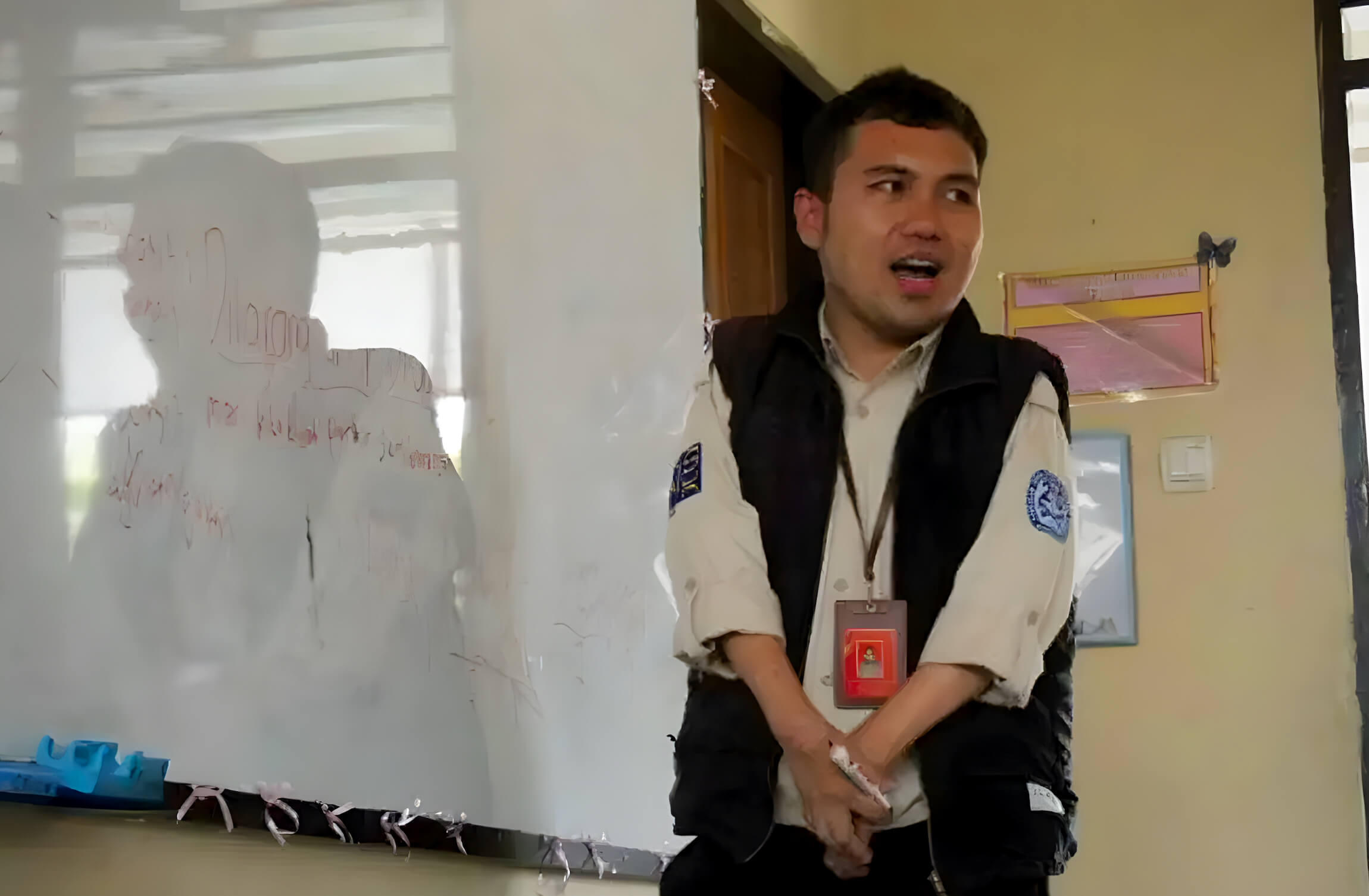




Jenilyn de la Cruz—Teacher Jen—is in her ninth year as a multigrade teacher at Lopero Elementary School. The job is demanding and requires multi-tasking skills, flexibility, and improvisation.
dream; it was my mother’s dream for me,” says Teacher Jen. “But I eventually fell in love with the course and later, with my students.”
She explains, “I’ve been given permission to create my own class schedule, so what I usually do is schedule only four subjects per day. For example, I would teach English, Math, Science, and Filipino every Monday, Wednesday and Friday, and the rest are scheduled on Tuesday and Thursday.
“We have one classroom for the combined grades and it has two blackboards, one in front and one at the back. The students from one grade face the front board while students from the other grade face the rear board, so they are seated back to back.
“My strategy is to give students in one grade a set of exercises that they can work on while I give a lecture to students in the other grade. Then after the lecture, I would assign the students their own activities while I turn my attention to the other grade.
“I’ve learned to multi-task since the lesson plans for 5th and 6th grades are totally different from one another. We also use learning materials developed for single-grade classes.”
Although Teacher Jen had experienced handling multigrade classes with special needs students during her internship, becoming a multigrade teacher right out of college was overwhelming and took some adjustment. But she now appreciates the challenge. “I’m happy that I got exposed to multigrade teaching. It presents a different kind of challenge and gives me an advantage if I do decide to switch to single-grade classes later on,” she says.
Teacher Jen says pre-service and in-service training on multigrade teaching is sorely needed. “Training is a must for teachers with no exposure to this type of set-up,” she notes. “In my nine years, we rarely had training that focused on multigrade teaching. I mostly joined training for single-grade teachers.”
She suggests revisiting the curriculum to consider the requirements and constraints of multigrade teaching. “Right now, we have a curriculum and teaching and learning materials that are designed for single-grade classes but are used in a multigrade setting. The number one problem is time allocation. We have to cover all lessons for both grades at a limited time,” she explains. “It would be easier for me as a multigrade teacher if we match most, if not all, of the lessons for both grades, and just tailor the activities, exercises, and learning goals according to grade.”
Teacher Jen also calls for more support for multigrade teachers. “We have a modest hardship allowance given yearly, but maybe our government can look into providing more benefits for multigrade teachers,” she says. “I commute four hours a day to and from school, but this is nothing compared to other teachers who have to cross rivers and mountains and risk their lives daily to teach children.”
Despite tremendous challenges, teachers like Jen remain dedicated to their profession, reaching many who might not have access to education.
Teacher Jen says that seeing her students excelling and graduating has been very rewarding. “My students integrated well when they transferred to a regular school and many of them maintained their academic standing. I even have a student who now has a nursing degree,” she says proudly.
The conversation has been translated and condensed for clarity. The views and opinions expressed in this article are solely those of the interviewee and do not reflect the official policy or position of ASEAN.








